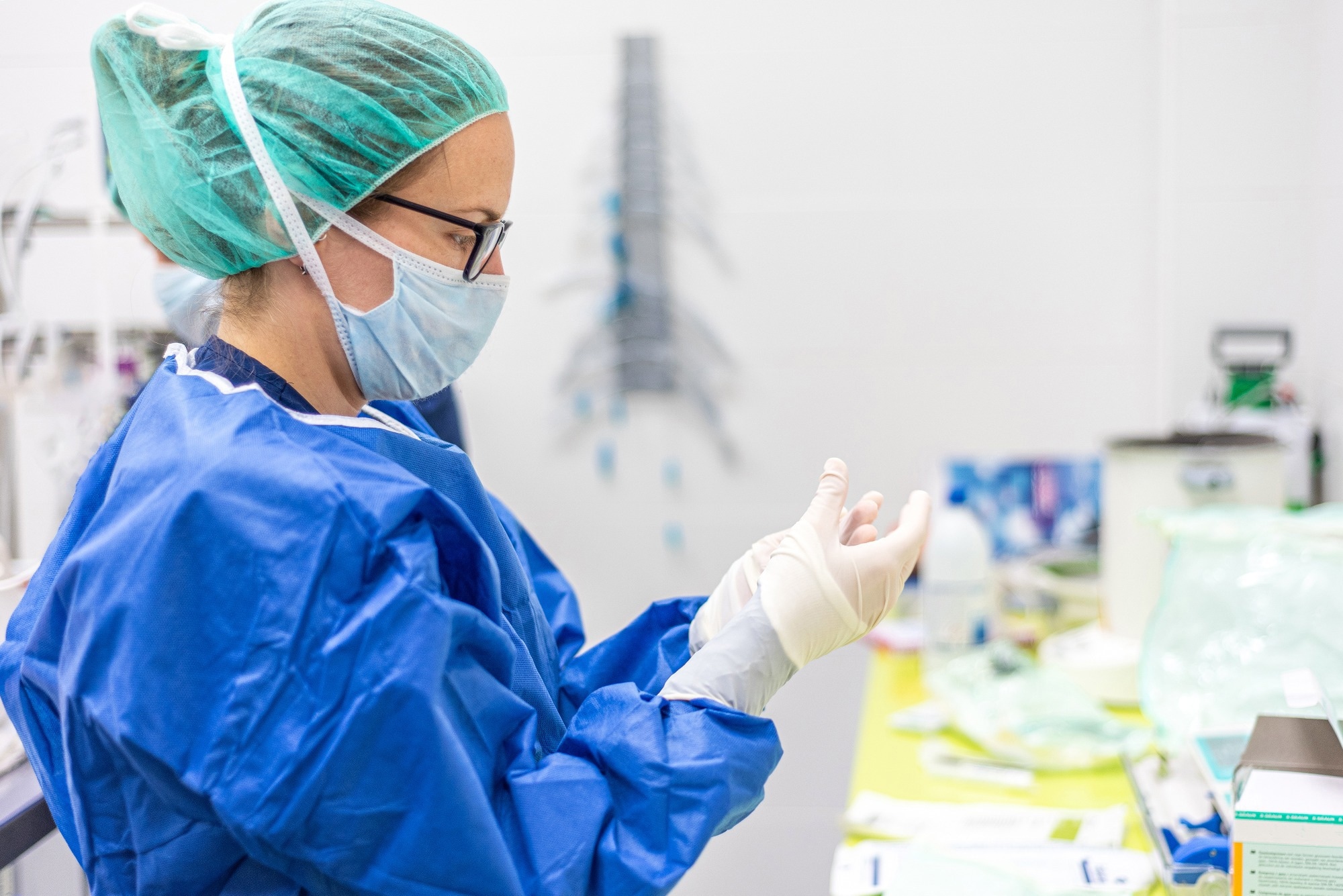They pursued evidence of sickness presenteeism, i.e., working while sick, in HCWs with reverse transcription-polymerase chain reaction (RT-PCR)-confirmed coronavirus disease 2019 (COVID-19).
 Study: Sickness presenteeism in healthcare workers during the coronavirus disease 2019 (COVID-19) pandemic: An observational cohort study. Image Credit: DavidHerraezCalzada/Shutterstock.com
Study: Sickness presenteeism in healthcare workers during the coronavirus disease 2019 (COVID-19) pandemic: An observational cohort study. Image Credit: DavidHerraezCalzada/Shutterstock.com
Background
Despite increased risks of nosocomial infection due to severe acute respiratory coronavirus virus 2 (SARS-CoV-2) than influenza, HCWs with COVID-19 demonstrated presenteeism.
Numerous studies reported nosocomial COVID-19 outbreaks due to symptomatic healthcare professionals. Yet, there is a lack of studies investigating the incidence of sickness presenteeism in SARS-CoV-2-infected HCWs and the rationale behind doing so.
About the study
In the present study, researchers ensured that all VABHS employees participated, including those not involved in direct patient care.
During the study observation window, they asked them to self-review their COVID-19 symptoms daily and leave work if experiencing symptoms. The team arranged for weekly or biweekly surveillance testing for all HCWs, especially those working in long-term care units.
They also gathered COVID-19 test results of employees working outside of VA Boston. For all HCWs who contracted COVID-19 due to community exposure or during contact tracing, the researchers arranged free, onsite testing and mandated it for those having COVID-19 symptoms.
At the time of the COVID-19 diagnosis, the team asked all HCWs to fill out a structured health interview, which helped them assess the time of symptoms onset, if present, and their number of working days on campus while symptomatic.
Some HCWs worked on campus for some days while newly symptomatic due to COVID-19. The team also distributed an anonymous survey among all HCWs between October 21 and November 21, 2021, to explore each individual's rationales for sickness presenteeism.
Study findings
Of nearly 4,000 HCWs at VABHS, 327 tested COVID-19 positive during the study period, of which 255 were assessed by the researchers with the help of a structured interview.
The prevalence of sickness presenteeism among these HCWs with symptomatic COVID-19 was 49.8% (127/255). They had similar age, gender, vaccination status, or race as those without presenteeism.
Of all symptomatic HCWs, 26% (66/255) worked for at least some time during a day when diagnosed but returned to work for additional days with symptoms.
Regarding the type of symptoms, some HCWs had specific (cough or shortness of breath), whereas others had nonspecific (headache or fatigue) symptoms (168 vs. 87). Strikingly, the rates of presenteeism did not vary markedly for HCWs with either type of symptoms.
About 168 of 255 symptomatic HCWs had a minimum of one COVID-19–specific symptom, yet, 47% (79/168) worked while symptomatic. Of 87 HCWs with nonspecific symptoms, 54% worked while symptomatic.
Intriguingly, mandatory surveillance three times more likely identified HCWs with sickness presenteeism. It reflects that many factors promote sickness presenteeism in healthcare settings; thus, targeted surveillance in such high-risk settings is necessary. It could help reduce the risks among HCWs who do not undergo testing or misread their symptoms.
A total of 52 HCWs, i.e., 20.4% of HCWs, completed the follow-up survey, wherein 79% self-reported working in the previous year with a minimum of one COVID-19 symptom. Over 50% of respondents self-reported working with fatigue, headache, and nasal symptoms.
However, they attributed these symptoms not to COVID-19 only. In 37%, 27%, 23%, and 15% of cases, they attributed these symptoms to allergies, colds, migraine, inadequate sleep, and mild COVID-19, respectively.
Strikingly, many HCWs demonstrated sickness presenteeism because they had concerns over increased workload on colleagues and personal responsibility, 66% and 45%, respectively.
Fewer, i.e., 19% and 10%, showed concerns about paid leaves and expectation to work while sick, respectively. There is a need for novel strategies to help HCWs with COVID-19 resume work while alleviating concerns about fulfilling their duties, most importantly, patient care without doing any harm.
Conclusions
According to the authors, this is one of the pioneering works estimating the prevalence of COVID-19-related sickness presenteeism.
Remarkably, this study demonstrated that presenteeism rates did not vary for HCWs working directly with patients, indicating that the perceived disease transmission risk from HCW to the patient did not alter choices about sickness presenteeism.
Another insight provided by this study was that more than 50% of HCWs with sickness presenteeism experienced nonspecific symptoms and not COVID-19-specific symptoms.
Perhaps they experienced these symptoms due to health issues, e.g., sleep inadequacy. Also, they perceived they were familiar with taking precautionary measures to not infect others, including their patients.
Overall, the survey response rate was relatively low, but those who responded well represented the entire cohort concerning demography and symptoms; thus, the study estimate of 49.8% sickness presenteeism in HCWs with COVID-19 should be considered a maximum.